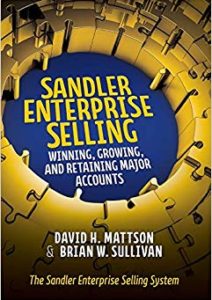We know all about value propositions, don’t we? Or do we? The term, “Proposition” is defined in the dictionary as “a statement that expresses a judgment or opinion” or a “scheme or plan of action”. Very interesting. While delivering subject matter expertise in enterprise selling is important, most would agree that listening is even more rewarding than “expressing judgments and opinions”. And “schemes”? Even the most transparent sellers would be unlikely to share with prospects any information about “scheming” to win their business.
To get more specific, what about value propositions? Two popular definitions are “statements about the combination of goods and services offered by a company in exchange for payment” and “innovations, services or features intended to make a product attractive to customers”. While definitions are typically rather broad, these antiseptic views of value propositions point to the real issue. For they cast the prospect as the target of the proposition. Ready, aim, fire. But the reality is that the prospect, or in the enterprise world, the prospect account, isn’t the target of the value proposition at all. Far from it. The prospect is its very source.
Think about typical organizational messaging regarding the benefit that your products or services will ultimately deliver. Heavily influenced by marketing or product development, it must be refined and customized to be meaningful in the real world with real prospects. For repeating boilerplate messaging in enterprise opportunities is a sure-fire recipe for failure, considering enterprise selling’s unique challenges like sophisticated competitors and the significant investments required in pursuits. The stakes are huge and while tools and processes can help streamline the pursuits, using generic messaging to cut corners has little correlation to success.
So how can you effectively build the customized messaging required in enterprise deals, quickly and economically, while staying agile enough to manage the vast complexities of these initiatives?
It begins with a logical account and opportunity-focused framework, with its roots in your market, territory and account planning. For it’s here where you aligned your organization’s strengths with your profile markets, verticals, and accounts. Your foundational work done in these stages provided the roadmap to pursue the highest probability deals. These truly aligned opportunities, vetted by team Go/No-Go analyses, provide the most fertile ground for the focused frameworks – the customized value propositions.
In Sandler Enterprise Selling, our value proposition has four parts:
What the product or service is that you propose – The specific solution addressing the prospect account’s needs and pains. It could be a standard product or service from your offerings portfolio or it might bundle multiple products and services including offerings from business partners, subcontractors or other third parties.
What the product or service actually does for the account. Your solution, of course, will do different things and be used in different ways by different accounts. How it will be ultimately be implemented by the specific prospect account must be clearly understood in customized terms.
How your solution will benefit the account. This must be identified in specific terms that make a discernible difference to the account. These concrete results that the prospect account will gain – their customized advantage that will favorably result from your solution, must be comprehensively understood.
How the account will measure the benefit. This represents the prospect account’s clear definition of success in the ultimate implementation of your solution after the business is won. How that success will be determined, in the account’s measured and calibrated appraisal must be known and taken into account.
Four clear elements – What it is, what it does, how it benefits and how it will be measured. This simple mantra will guide your team throughout the pursuit, keeping laser focus on the account. All the work that may have been previously done by your organization’s marketing or product development teams is in the past. At this point, it’s completely about the account and the alignment of your solution to directly address the specific needs and pains.
Of course, the effectiveness of this value proposition framework is dependent on the quality of the work that your team has done in comprehensively understanding the account’s specific needs and pains and your ability to address them. A high-quality effort in those areas ensures you know the account, you understand the needs and that your “Go/No-Go” points to moving ahead with acceleration. From there, you’re guided by the value proposition – the what it is, what it does, how it benefits and how it’s measured.
Given the complicated nature of enterprise pursuits, winning is often determined by the simple things. Follow the simplicity and clarity of this framework and never forget that regarding value propositions, it’s not about you. It’s about the account.












Comments